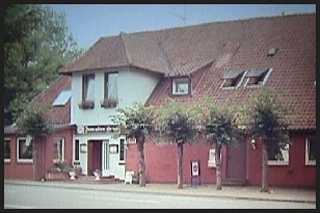
Zum Alte Krug in 1990, now a popular Walle restaurant.
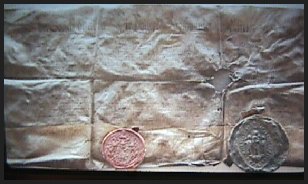
The 1621 charter of Zum Alte Krug.
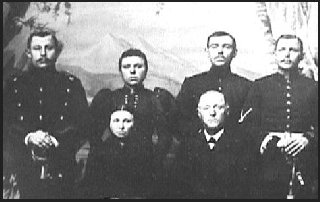
Kröger Hermann Hinrich Lührs and his family in 1898.
We have traced Joan's Lührs ancestors back to the mid-17th century in the town of Langwedel. About 100 years later members of her family began to settle in the nearby village of Walle. By 1800, her direct Lührs line was living there. Our research has been primarily in the records of the church in Daverden -- which served Langwedel -- and of the Verden Dom (cathedral) which served Walle. We particularly thank Margrit Meyer and Werner Beckröge of Germany for their considerable help in searching these and other records.
Vic Berecz and Joan Luhrs Berecz
Beginning in the mid-1800's, and continuing to the present, the Lührs family of Walle and their descendants were proprietors of Zum Alte Krug -- the oldest "Gasthaus" in the area. In 1616, the Holy Roman Emperor authorized a post route from Hamburg to Köln. This route, between Rotenburg and Verden, passed through Walle. As a result of increased traffic due to the post riders, the local authority -- Philipp Sigismund, Bishop of Verden and Duke of Braunschweig and Lüneburg -- on the 20th of April in 1621, granted a concession to operate a tavern in Walle to Heinrich Nacken and his heirs. The annual tribute to maintain that Kruggerechtigkeit (right to operate a tavern) was set at 13½ groschen and a pair of marshhens. In 1664, Lorenz Martfeld purchased the concession, including the building (Walle house #19) and business, from its original owner. Since then it has been passed down by a rather complicated series of inheritances through the Martfeld, Schloo, and Lührs families to the present owner. That owner, a step-daughter of Joan's second cousin, still has in her possession the original Urkunde (document) written on pigskin.
 Zum Alte Krug in 1990, now a popular Walle restaurant. |
 The 1621 charter of Zum Alte Krug. |
 Kröger Hermann Hinrich Lührs and his family in 1898. |
Joan's grandfather -- Johann Hinrich Lührs -- was familiarly known in the Plattdeutsch dialect of Walle as "Jan Smed" -- John the Blacksmith. In the early part of the 20th century he ran a smithy and a small store. Over the decades he was a well-liked community leader. During World War II, he lost two sons and a son-in-law in the fighting. The story of this Lührs man is told in the 1983 book Wenn Nix Dortwüschen Kummt by Hinrich Gerken. This book is unusual in that it is written entirely in Plattdeutsch, part of a recent trend to re-establish Platt as a literary language.
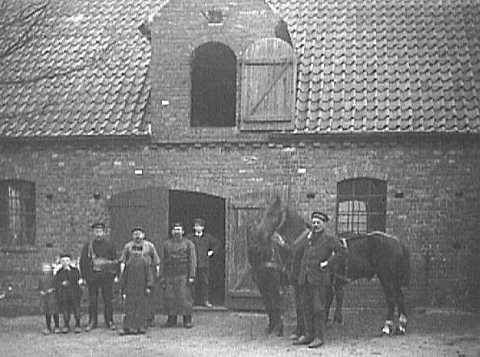
The emigration of part of the Lührs family to the United States began in the early 19th century. An aunt and an uncle of the Hermann Hinrich shown above, came to the US in the 1830s. Their families eventually settled in Illinois and Iowa respectively. We have traced the descendants of Catherine Mette Lührs to the large Roessler clan of Shelbyville, IL. You will see some of them in the database.
But, we've been unable to trace the sons, Christopher and Hermann, of our Iowan -- Christoph Wilhelm Lührs. We believe those boys gave up farming for the lure of California gold. A more distant relative, Johann Lührs born in 1835, was reported in Kentucky at the time of the Civil War. He is believed to have returned to Germany to avoid the draft, but later came back to the U.S. We know nothing further of him. Any help in locating the descendants of these "lost cousins" in America would be appreciated.
Other more distant Lührs relatives also emigrated to the U.S. in the 19th century. One was Catherine Margarethe Beckröge who married a local Langwedel man who had lived for years in the U.S. looking to "strike it rich" in the gold fields. He ended up in northern Idaho where he actually did strike it rich, but in a variety of businesses ... cattle, hotel, store, and also mining. This husband, Henry Elfers, another Lührs relative named Brüne Beckröge, and a third man were killed by Indians on 14 Jun 1877 at the Elfers ranch along John Day Creek in Idaho. This wanton act of violence was a major factor in precipitating the Nez Perce Indian wars. At the time of this writing, we continue to investigate other links between the Lührs and Elfers families, as well as the Elfers descendants in the U.S.
It was then almost 100 years until there was further Lührs emigration from Walle to the United States. In the 1920's the three oldest children of the Walle blacksmith, Johann Lührs came to New York to flee the devastating post-war German economic conditions. Henry, Marie, and Joan's father, John Luhrs are shown below.
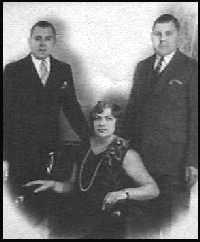
We hope you enjoyed this web page on our Luhrs ancestors.
If you're interested in learning more about our other ancestors, visit our
Vic Berecz' FAMILY HISTORY on the Web website. Thanks. Vic and Joan Berecz
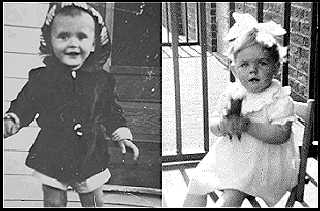
For more information on the Langwedel/Walle Lührs family line
![]() Send E-mail to Vic and Joan Berecz
Send E-mail to Vic and Joan Berecz